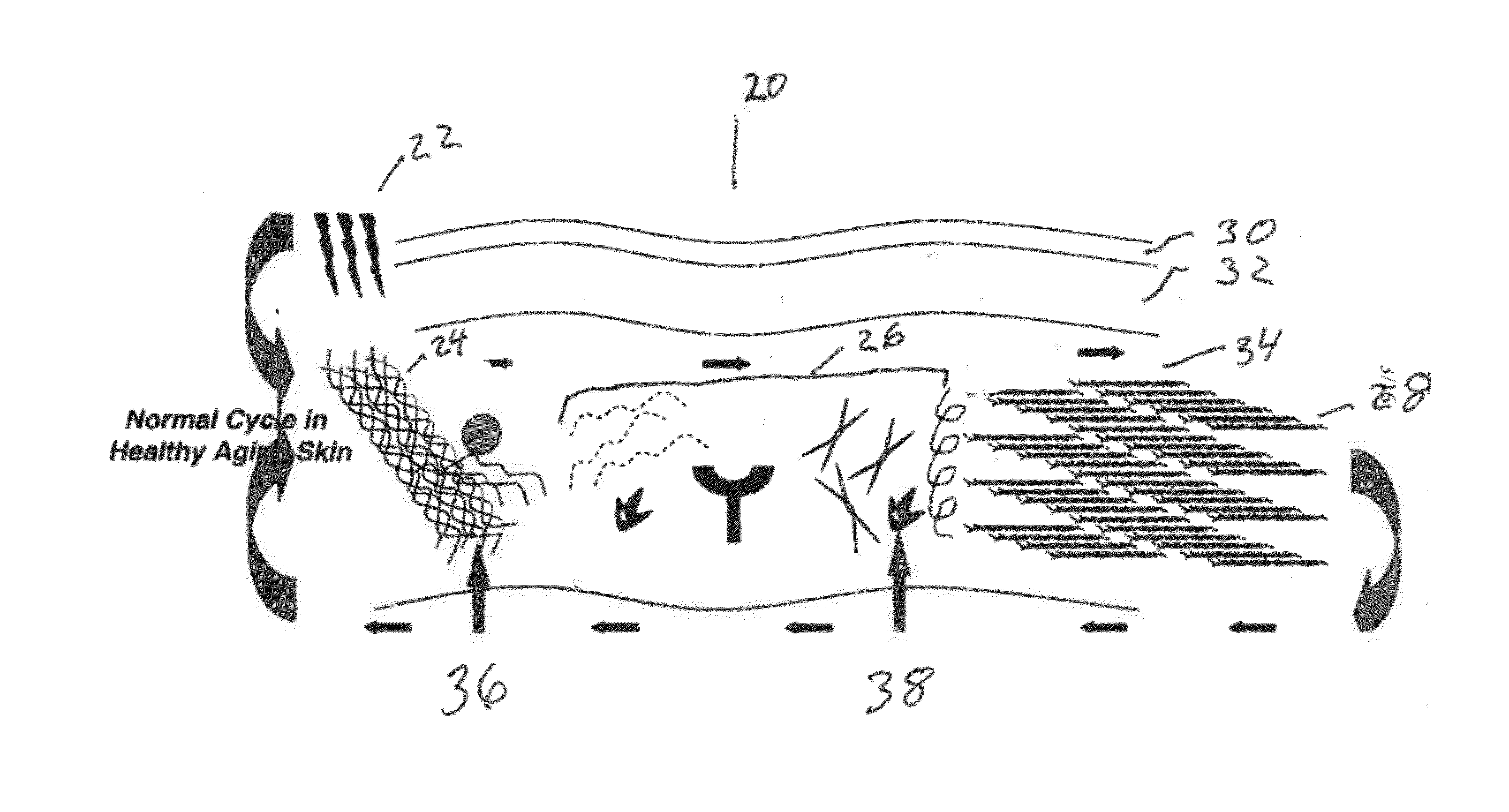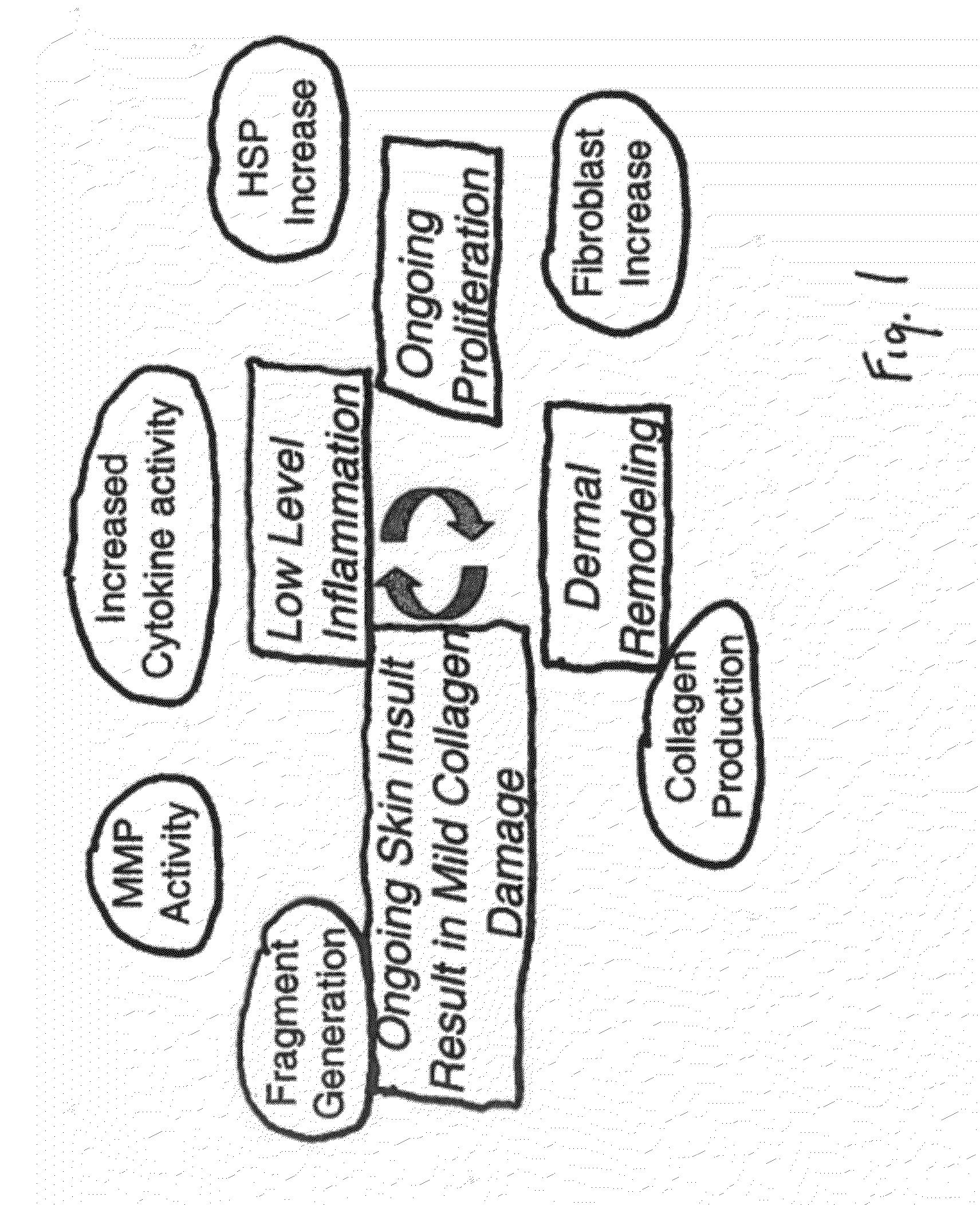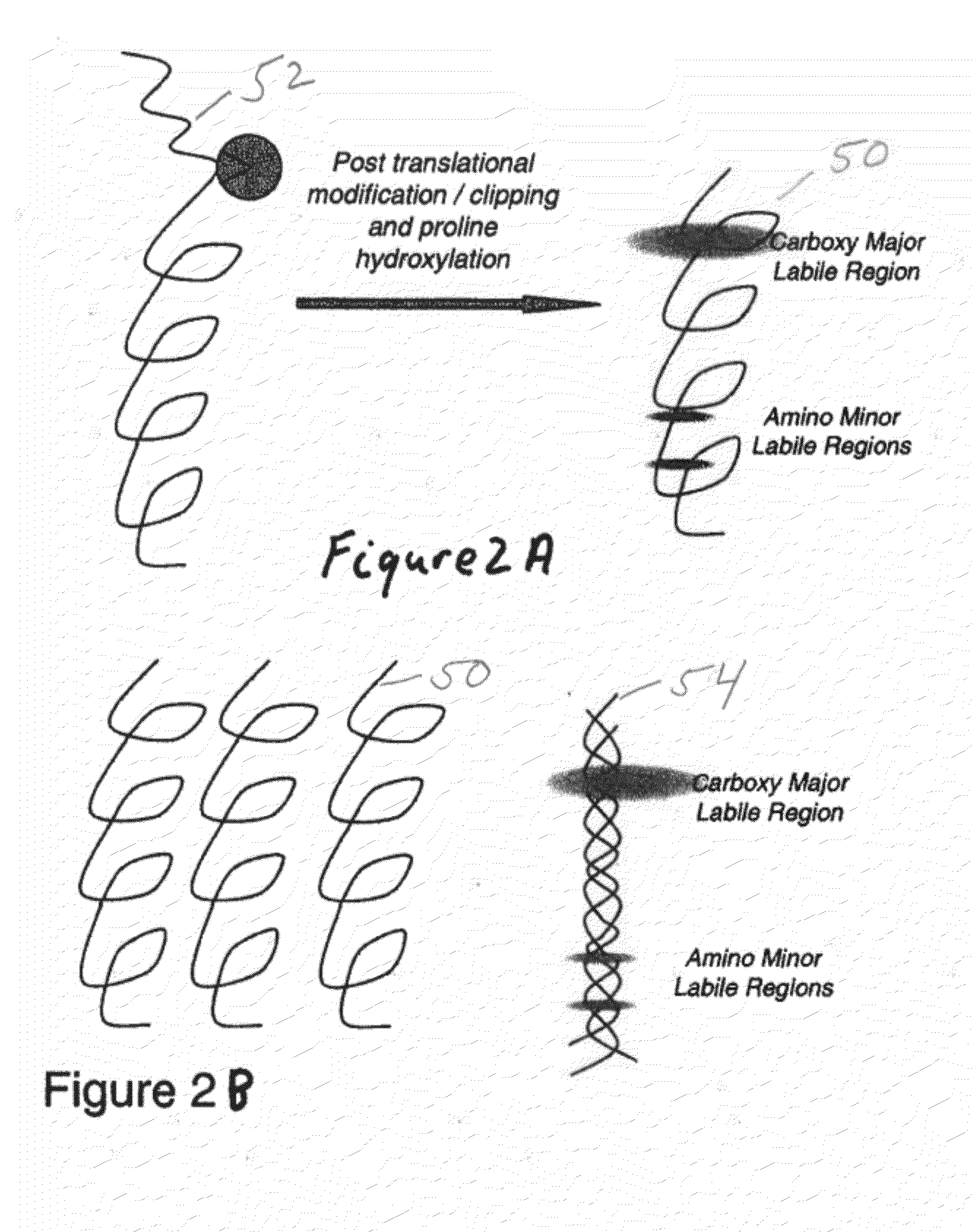Genetic Signatures and Gene Chips Associated With Administration of Electrically Conducted Radio Frequency Current to Skin and Methods and Treatments Relating Thereto
a radio frequency current and gene chip technology, applied in the field of cosmetic skin treatment regimens, can solve the problems of imposing a serious cosmetic appearance to the consumer, needing to turn to more invasive medical procedures, and the advancements in skin care technology still fail to produce the desired effect, etc., to achieve safe and effective rf current based treatment, precise and multiplex feedback of cellular response, and avoid the effect of more problematic damage-induced inflammatory cytokine respons
- Summary
- Abstract
- Description
- Claims
- Application Information
AI Technical Summary
Benefits of technology
Problems solved by technology
Method used
Image
Examples
example 1
[0101]This example illustrates treatment of the periauricular region of facial skin for purposes of conducting genomic and histological assessments. Therefore, all treatments are technician-administered in a clinical setting for control purposes. Treatments are administered to four zones within the treatment area for a total of 16 minutes with 4 minutes per zone, 3 times per week for six weeks. The protocol is according to a split face / neck study in a within-subject control design with the treatment applied only to the periauricular region of one side and a sham treatment consisting of gel plus an unpowered device applied to the corresponding periauricular region of the other side. Treatments are monitored with thermal imaging cameras to ensure that target skin surface temperatures of 40-43° C. are reached within the first minute and maintained but not exceeded during each 4 minute treatment.
[0102]The treatment site is located and centered just below the ear. The s...
example 2
Biopsy Protocol
[0104]This example illustrates the relatively gentle biopsy protocol used to collect samples for assessment and monitoring purposes in accordance with certain aspects of the invention and support data disclosed herein.
[0105]A clinical biopsy study was conduced using an RF-current delivery device in 30 adult female subjects. Treatments were provided in the periauricular (around the ear) region of the facial skin. Periauricular skin is known in the cosmetic arts as a suitable perorbital substitute. Treatments were clinically administered using a Syneron V8 device (see Example 3), and a four minute heating profile as the target profile. Subjects received treatment three times per week for a total of six weeks. Biopsies were conducted to inspect skin histology as a function of treatment, and to generate a genomics profile.
Biopsy Procedure:
[0106]One 4 mm biopsy was taken from the periauricular area from both the right and left sides of the neck (this area is located just b...
example 3
mRNA Extraction and Analysis
[0108]This example illustrates RNA biomarker identification and analysis that underpins certain embodiments of the invention including gene chips, genetic signatures and discovery of the biological model that guides RF delivery regimen design.
[0109]4 mm biopsies in accordance with Example 2 were taken from both sides of the face / neck just below the ear as described above 2 times, once at 24 hours post final treatment, and once at 4 weeks post treatment.
[0110]The biopsied samples were transferred to 2 ml centrifuge tubes containing 1.5 ml tissue storage reagent (RNAlater® solution, invitrogen, Life Technologies, Carlsbad, Calif.). Tubes were refrigerated overnight at 2-8° C. Storage reagent was removed and the samples were placed in a freezer at −80° C. until processing. Just prior to processing, samples were removed from the freezer and 1.5 ml monophasic solution of phenol and guanidine isothiocynate (TRIzol® reagent, Invitrogen, Life Technologies, Carlsb...
PUM
| Property | Measurement | Unit |
|---|---|---|
| skin surface temperature | aaaaa | aaaaa |
| surface temperature | aaaaa | aaaaa |
| surface temperature | aaaaa | aaaaa |
Abstract
Description
Claims
Application Information
 Login to View More
Login to View More - R&D
- Intellectual Property
- Life Sciences
- Materials
- Tech Scout
- Unparalleled Data Quality
- Higher Quality Content
- 60% Fewer Hallucinations
Browse by: Latest US Patents, China's latest patents, Technical Efficacy Thesaurus, Application Domain, Technology Topic, Popular Technical Reports.
© 2025 PatSnap. All rights reserved.Legal|Privacy policy|Modern Slavery Act Transparency Statement|Sitemap|About US| Contact US: help@patsnap.com



